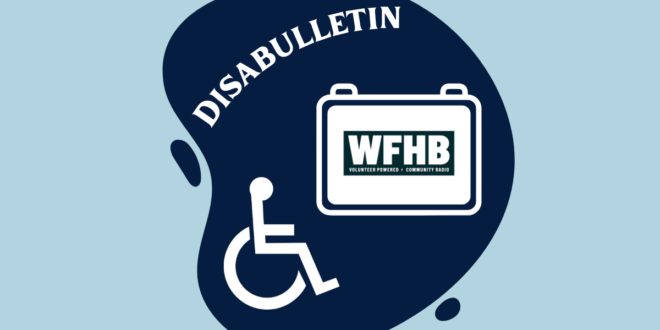Podcast: Play in new window | Download (Duration: 6:46 — 5.6MB)
Subscribe: RSS
In today’s Disabulletin, WFHB Correspondent Abe Shapiro concludes his interview with Attorney Jeremiah Frei-Pearson about a lawsuit against the ride-share company Lyft over its alleged lack of wheelchair-accessible vehicles, or WAV followed by a preview of our next story.
It is the case of Marion Health and Hospital Corporation Vs Talevski, soon to come before the Supreme Court of the United States. The case concerns whether or not third parties can initiate lawsuits again public institutions, the third party in this case being the late nursing home resident Georgi Talevski and the public institution being the Marion County Health and Hospital Corporation, which operated the public nursing home Mr.Talevski resided at and where he was allegedly put in danger. More to follow in the weeks ahead.
Lyft officials cited a limited supply of wheelchair-accessible vehicles and driver availability as reasons why WAVs are only available to Lyft riders in nine cities across the entire U.S.
To provide more insight on the issue, we turn to the latest edition of Shapiro’s report on the story and interview with Attorney Jeremiah Frei-Pearson of the disability rights group Westchester Disabled on Move Incorporated.
In a statement provided to Disabulletin, a spokesperson for Lyft stated, “Lyft has a long-standing commitment to maintaining an inclusive and welcoming community, and we’re constantly seeking solutions to address WAV supply challenges.”
1. I understand that while there are exceptions to the rule as we saw recently in California, several transportation companies have faced lawsuits that usually end in settlements. But in this situation, would a trial or a settlement be better and what precedent could be set by either?
2. The reason I bring up the word “settlement” is that such a phrase brings about the possibility of the continuance of alleged inaccessibility. This leads me to ask what is the intended result that the plaintiffs in this case seek that is similar or different from others that have come before, trial or not?
 WFHB Bloomington Community Radio
WFHB Bloomington Community Radio


